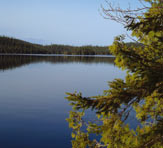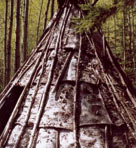  |
|
| |
Institutions > Aboriginal Forest Tenures |
| |
By "institutions" we generally refer to structures and rules that make up the forest management system of a given jurisdiction -- also called "institutional arrangements". While people also often use "institutions" to mean "organizations", that is not the primary meaning intended here. |
| |
|
| |
Rogers, J. 2007. Reshaping Crown- First Nation Relationships amid Changing Contexts: An examination of the intersection between the Crown’s promise of a New Relationship and the implementations of the Forest and Range Agreement. |
| |
As of June 2006, despite court rulings and sustained political opposition, one-hundred and six First Nations had signed Forest and Range Agreements/ Opportunities, providing access to seventeen million cubic meters of timber and sharing more than one-hundred and twenty million dollars in revenue. The legality and ‘fairness’ of these policies has been analyzed and discussed, however FRAs continue to be ratified with little research on how they are actually working on the ground. Using anthropological and political-science research and analytic tools, the thesis examines the state of the implementation of the Gitxaala Nation’s Forest and Range Agreement in the era of the New Relationship’s commitment to work towards the reconciliation of Aboriginal and Crown titles and jurisdictions. The examination demonstrates that the New Relationship’s vision is ambiguous and has resulted in a lack of a shared understanding concerning objectives and successful implementation. The findings indicate that this lack of mutual understanding is impeding the establishment of a truly new relationship in which the Crown and the Gitxaala Nation can work together to successfully implement the FRA. Furthermore the case study demonstrates that Provincial policy without clear directives allows for interpretation by local policy implementers which is resulting in discrepancies in policy outcomes. In the case of Gitxaala, until clear policies and directives are developed that respond to a mutually understood vision, the New Relationship and the FRA simply represent a ‘new’ Provincial tactic for the Province to maintain a hold on resources and create certainty for industry in an era of strengthened Aboriginal claims. (Abstract) |
| |
National Aboriginal Forestry Association (NAFA). 2003. Aboriginal-held forest tenures in Canada, 2002-2003. Ottawa, ON: NAFA. |
| |
This report provides a quantitative breakdown of provincial/territorial tenure systems and the degree of Aboriginal participation in them. A discussion of key trends and events in each jurisdiction is provided, and the results are summarized at the national level using an innovative tenure classification system to allow this synthesis. An updated version of this report using 2006 data is available from NAFA - free to members and at a small cost to non-members. |
| |
Ross, M., and P. Smith. 2002. Accommodation of Aboriginal rights: The need for an Aboriginal forest tenure. Edmonton, AB: Sustainable Forest Management Network. Synthesis Report. April 2002. |
| |
Ross and Smith argue that recognizing and accommodating Aboriginal and treaty rights will require the development of forest tenure types that are tailored to the unique needs and aspirations of Aboriginal Peoples. They present an outline of some key considerations that need to be addressed in the development of any such tenure. |
| |
Nisga'a Annual Report 2004 on the implementation of the Nisga'a Final Agreement of 2000. |
| |
This report includes a section providing an overview of progress in developing the forest management regime under a modern-day treaty. Activities described include legislation such as the Nisga'a Forest Act and economic development around the increased access to forest lands. |
| |
|


